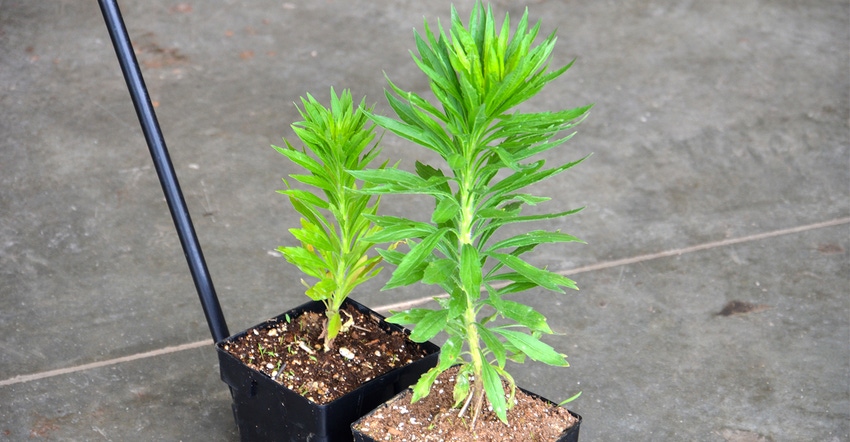
Interest in both planting cover crops and applying herbicides in the fall is gaining steam. The only catch is that the two practices seem diametrically opposed to each other. Is there any way you could grow cover crops and still reap the benefits of a fall herbicide application for next season’s weed control?
Jeff Nagel, an agronomist and certified crop adviser with Ceres Solutions, based in Lafayette, believes there are certain situations where this could work. In other cases, depending on the cover crop species you want to use, you may have to choose either cover crops or a fall herbicide application.
If you’re seeding cereal rye by itself as a cover crop, for example, and get it planted in a timely manner in the fall, you still have the opportunity to make a fall application that could take out tough weeds, Nagel says. A late-fall application of several dicamba formulations would allow you to take out marestail, for example, without destroying the cereal rye cover crop, he says.
These include but aren’t limited to Clarity, Sterling Blue, Engenia and XtendiMax. Both the Clarity and Sterling Blue labels specify instructions for spraying newly seeded grasses or small grains. Small grains listed on both labels include “barley, oats, rye, sudangrass, wheat or other grain species grown as a cover crop.” Both labels also state that “postemergence applications can be made after seedling grasses exceed the three-leaf stage.”
Early jump
Getting a jump on marestail through a fall application of herbicide is proving to be a winning strategy, Nagel says. Often marestail plants emerge in the fall. They remain small and are susceptible to herbicide applications as long as the herbicide is effective against them.
If you let them go until spring in conventional tillage situations, it’s a must to get them while they are small, before they jump out of the rosette stage and begin growing rapidly. Sometimes spring weather makes that difficult to accomplish.
If you want to seed brassicas or crimson clover with your cover crop mixture, then you won’t be able to apply herbicides in the fall, Nagel says. He’s not aware of any options that allow you to spray and not wipe out those cover crop species in the process.
Both the Clarity and Sterling Blue labels state that the product “may injure or kill alfalfa, clovers, lespedeza, wild winter peas, vetch and other legumes.”
About the Author(s)
You May Also Like




